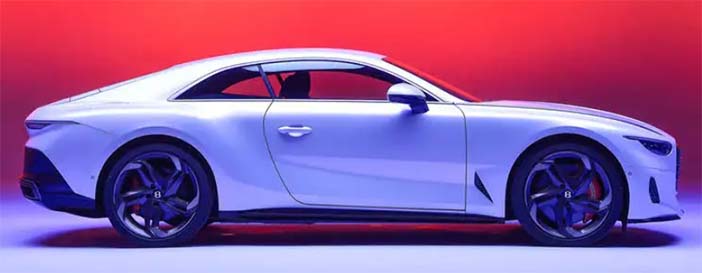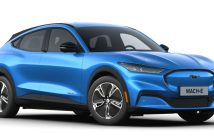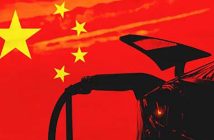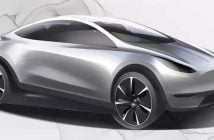+++ In January, Renault CEO Luca de Meo opened up about plans for global expansion, with subbrand ALPINE given the role of planting flags in North America and China. As startup brands are finding of late, not only is making cars difficult, servicing them without an easily accessible network is a costly pain. Tesla’s been at it for a decade and Tesla owners still face a particular set of challenges. With De Meo looking for the best way into the U.S. market, AutoNation might have opened the front gate. The Renault chief has been in talks with AutoNation CEO Mike Manley (formerly top dog at Fiat Chrysler) about getting Alpines into showrooms. This is all preliminary, mind. Renault’s working several angles and AutoNation is just one of them. A few of the draws for going with the Ft. Lauderdale, Florida-based dealer group are that it’s well established, being 27 years old, having more than 300 outlets nationwide, and being the number-one-selling dealer group in the U.S. since 1997, a year after it was founded. In 2022, AutoNation sold 229.971 new cars, down from 262.403 new vehicles in 2021 and giving up the company’s longtime lead spot to the Lithia Motors dealer group. And while AutoNation sells almost everything from Bentley to Nissan and Porsche, it doesn’t sell Polestar or Lotus. An Alpine A110 sports coupe would fill a nearly empty segment space on showroom floors, and the Alpine electric crossovers would need to put up a big fight for attention among competitors or Alpine partners. Renault is already in a joint venture with Polestar owner Geely for ICE and electrified ICE powertrain development and could work with Geely on a platform for the CUVs, and the electric Alpine A110 successor is rumored to spring from a partnership with Lotus. The smaller Alpine crossover for the States would be about the size of the Porsche Macan, the larger one about the size of the Porsche Cayenne Coupe. If anything comes of the discussions, it’s also possible AutoNation starts as a digital front for ordering Alpines and is then able to service the cars that are sold. Renault has much to figure out about North American expansion, but the A110 is a tiny seller and the crossovers aren’t due here until 2028, so there’s time. +++
+++ Last summer, ASTON MARTIN executive chairman Lawrence Stroll continued his shakeup of the British carmaker by making it known he sought partners for a planned range of electric vehicles. At the time, he mentioned Mercedes-Benz, Rivian and Lucid as potential sources for a platform and maybe more. Mercedes seemed an odd choice. Despite the Germans being Aston Martin’s technology partner (a friend in a time of dire need), Stroll’s comments over the previous year made it sound as if he viewed the tie-up more like a punishment he was bound to. We’re not sure if Rivian ever got past the public musing stage. Lucid seems to be in the lead, as the California automaker was supposedly in previous discussions with the English about an EV sports car platform. Stroll is serious about Lucid again, talking to both the Saudi Public Investment Fund (PIF) that owns a controlling interest in Lucid and directly to Lucid CEO Peter Rawlinson. On top of needing to find a partner for a range of battery-electrics to roll out around 2027, Stroll’s trying to fend off unwelcome suitors and maintain independence. 2 years ago, Aston Martin’s stock price surpassed £22 per share. Last November, it fell below £1 per share, now it’s up to £2. The market’s seen plenty of free-fallers over the past couple of years, so it’s not like Aston is alone. But the cratered market cap has led to stories about Geely founder Li Shufu taking a close look at acquiring a second English sports car maker after buying Lotus. The Saudi PIF is currently the second-largest shareholder in Aston Martin Lagonda Global Holdings with an 18.7% stake, following the 28.4% stake held by Stroll’s consortium. Geely is the third-largest shareholder at 7.6%. Considering what Geely’s done with Volvo, Polestar and Lotus, it’s hard to say Shifu would be an unworthy asset manager, but we understand Stroll’s quest for independence. If Stroll can close a deal that gets his carmaker money, an EV platform and a tech partner, he gets breathing room. Coming to a new agreement with the Saudi PIF and Lucid could do all three, as well as helping Lucid, the Californians potentially being able to take advantage of Aston Martin’s storefront and service infrastructure. Aston Martin “allegedly” arranged in January to buy electric motors from Lucid. The Aston Martin F1 team buys power units wholesale from Mercedes and doesn’t have a Formula E team, suggesting this deal is for passenger cars, perhaps the refreshed lineup due later this year. Complex issues like “Aston’s heavy debt burden and Lucid’s rapid cash burn rate” are said to stand in the way of a partnership for now. Both issues could be alleviated by the Saudi PIF, should it choose. +++
+++ We knew the BENTLEY W12 engine had an expiration date before, but it’s going to come up even quicker than expected. Revealed today, Bentley says the last W12 engine it produces will be in April 2024. That’s only one year and a couple of months away! Previously, Bentley made it clear that it would only sell PHEVs and EVs by 2026, implying the W12 was done for. It won’t last long enough to bump into that 2026 limit now that the 2024 production end is set. By the time its end date rolls around, Bentley will have made over 105.000 W12 engines since the 6.0-liter twin-turbocharged unit was introduced for 2003. Each of those engines was hand-built by a team of craftspeople; Bentley says each engine takes approximately 6.5 hours to complete. Which Bentley models are going to be made available with these final W12s, you ask? The real celebration for Bentley is happening with the Batur, a small run of Mulliner coach-built coupes based on the Continental GT. Final validation just wrapped up for the Batur version of the W12, and it’s the most powerful yet at 740 horsepower and 1.000 Nm of torque. Versus the W12 found in other Bentley models, the Batur features reworked intake, exhaust and cooling systems along with a revised engine calibration. Unfortunately, all 18 Baturs (picture below) are already spoken for. If you still want a W12, Bentley says it has limited order slots left for the Continental GT Speed, Bentayga Speed and Flying Spur Speed. Additionally, Bentley will allow you to spec it in either the Continental GT Mulliner or Flying Spur Mulliner. No other new Bentley orders will be W12-compatible between now and production completion. The company warns that there are only a limited number of build slots left, so anyone still on the fence should act quickly if they want the W12. Over the years, Bentley says the W12 has seen a 37% increase in power, 54% increase in torque and 25% reduction in emissions. The biggest changes came in 2015 when Bentley redesigned the engine “from the sump up” for the launch of the Bentayga. As of today, there are 30 people involved in the engine assembly process. Bentley says it aims to retrain and redeploy all 30 into different positions once W12 production ceases. +++

+++ When The New York Times decides that an issue is an issue, be prepared to read about it at length. Rarely will a week passes these days when the esteemed news organization doesn’t examine the realities, myths and alleged benefits and drawbacks of ELECTRIC VEHICLES . That revolution, marked by changes in manufacturing, consumer habits and social “consciousness,” may in fact be upon us. Or it may not. Nonetheless, the newspaper appears committed to presenting to the public these pros and cons. In this recently published article titled, “Just How Good for the Planet Is That Big Electric Pickup Truck?” (wow, that’s a mouthful) the Times focuses on the “bigness” of the current and pending crop of EVs, and how that impacts or will impact the environment and road safety. This is not what news organizations these days are fond of calling “breaking news.” In October, we pointed to an essay in The Atlantic that covered pretty much the same ground, and focused on the Hummer as one particular villain. In the paper, the Times’ Elana Shao observes how “swapping a gas pickup truck for a similar electric one can produce significant emissions savings”. She goes on: “Take the Ford F-150 pickup truck compared with the electric F-150 Lightning. The electric versions are responsible for up to 50 percent less greenhouse gas emissions per mile”. But she right away flips the argument, noting the heavier electric pickup trucks “often require bigger batteries and more electricity to charge, so they end up being responsible for more emissions than other smaller EVs. Taking into consideration the life cycle emissions per mile, they end up just as polluting as some smaller gas-burning cars”. Certainly, it’s been drummed into our heads that electric cars don’t run on air and water but on electricity that costs money, and that the public will be dealing with “the shift toward electric SUVs, pickups and crossover vehicles, with some analysts estimating that SUVs, pickups and crossovers could make up 78 percent of vehicle sales by 2025″. No-brainer alert: Big vehicles cost more to charge. And then there’s the safety question, which was cogently addressed in the Atlantic story. Here Shao reiterates data documenting the increased risks of injuries and deaths caused by larger, heavier vehicles. T raffic deaths have increased in recent years, while fatalities in other comparably developed countries have been falling. There are a number of factors to blame, including dangerous road design and high speed limits, but experts and advocates point to the supersizing of America’s vehicles, too. Shao ends the piece not by offering many solutions but by pretty much stating the obvious: “American consumers love their big SUVs and pickups”. +++
+++ For executives on both sides of the Pacific, FORD ’s controversial deal to build a $3.5 billion electric-vehicle battery plant in Michigan using Chinese technology was the finale of a high-wire act that began 2 years ago. When Ford and China’s CATL first began talking in early 2021 about building batteries together in North America, a political firestorm seemed like a distant prospect, according to people familiar with the negotiations. That soon changed. U.S. House Speaker Nancy Pelosi’s trip to Taiwan last year kicked off a diplomatic clash that caused a delay in announcing the plant. An escalating trade war didn’t help matters. Now, the pact is drawing scrutiny from government officials in the U.S. and China as an alleged spy balloon inflames tensions between the 2 countries. But the deal’s carefully negotiated framework (Ford will own and operate the plant, while CATL will license its technology without taking an equity stake) provides a blueprint for Chinese companies seeking to profit from America’s rush into battery power, and possibly for other U.S. automakers looking to boost EV output. Navigating geopolitical disputes will be crucial as century-old carmakers like Ford and General Motors scramble to catch up with Tesla. In the fast-growing market for plug-in vehicles, batteries have become a key battleground, and Ford and its rivals need China’s technology. Just 2 Chinese companies (Tesla supplier CATL and rival BYD) account for more than half of the world’s EV battery production. “The deal has already set a precedent”, Tu Le, managing director of China and U.S.-based advisory firm Sino Auto Insights, said in an interview. “For the second or third Chinese company to come in, it’s not going to be as shocking”. As far back as March of last year, CATL, the world’s biggest battery maker, and Ford were evaluating sites across North America for the plant. Mexico emerged as the front-runner to land the factory, according to the people, who asked not to be identified revealing internal considerations. Places along the Mexican border seemed ideal, with cheap and plentiful labor and the infrastructure needed to easily export to the U.S., the people said. CATL scoured locations in the Latin American nation in July, just before Pelosi’s trip to Taiwan. But the lawmaker’s visit ratcheted up tensions, leading the Chinese company to push back an announcement. Then president Joe Biden’s climate push changed everything. In August, Congress passed the Biden-championed Inflation Reduction Act, which included big tax breaks for building batteries in the U.S.. Ford and CATL suddenly shifted their sights north of the border, according to the people. “The IRA was incredibly important to us”, Lisa Drake, Ford’s vice president of EV industrialization, told reporters February 13. “It did what it was intended to do”. Ford had just gone public with its budding relationship with CATL, detailing its strategy to amass the materials and products to build 2 million battery-powered models a year by the end of 2026. The automaker fielded pitches from multiple U.S. states anxious to land a plant offering thousands of high-paying jobs. The eager bidders included Virginia, which pushed a site in a rural area in the south-central part of the state, according to people familiar with the proposal. But political pushback complicated the negotiations. As tensions between the U.S. and China intensified, Virginia Governor Glenn Youngkin, a possible Republican presidential hopeful, pulled his state from consideration for the factory, calling it a “Trojan horse” that would undermine policy efforts to strengthen the U.S. auto industry. Ford and CATL hatched a plan to maximize the tax benefits of the legislation while hoping to dodge political opposition. Ford would own and operate the plant as a wholly owned subsidiary, while licensing the technology from CATL, which will help with installation of factory equipment at the plant and have permanent staff on site. That setup allows Ford to reap all the tax benefits of the IRA without having to share with a joint venture partner. And since CATL doesn’t have an equity stake in the plant, the companies avoid a national security review by the U.S. government. The Michigan factory is key to Ford’s $50 billion plan to challenge Tesla’s EV dominance. When it opens in 2026, the plant will produce enough batteries to power 400.000 Ford models a year, Drake said. Ford received an economic incentive package worth about $1 billion from Michigan for the plant. CATL is the world leader in lithium iron phosphate batteries, which are cheaper and more stable than their nickel-based counterparts. They also don’t rely on cobalt and nickel mining, which has been shadowed by allegations of human-rights abuses. The deal is by no means a one-off. The pair are also exploring supply deals in Europe and China, though the structure they will take isn’t certain. For CATL, the Michigan pact allows the company to establish itself in the U.S. without bearing the multibillion-dollar expense of building and operating a factory. It also adds yet another major brand to its growing stable of clients. Tesla, which amounted to 10% of its company’s sales in 2021, is by far its largest single customer. While there’s no indication that geopolitical tensions will be enough to derail the Ford-CATL plan, lawmakers have been vocal in their opposition. China will scrutinize the agreement to ensure the battery giant’s core technology isn’t handed over to the carmaker, people familiar with the matter told this week. In the U.S., Republican senator Marco Rubio has called on regulators to review the licensing agreement. The deal is a “hypocrisy of the Communist Party regime”, Mark Warner, the Democratic chairman of the Senate Intelligence Committee, said Thursday in an interview. “They have forced technology transfer, stolen technology and now want to try to reverse the flow”. The Ford-CATL deal is part of a role reversal for the U.S. and Chinese auto industries. 3 decades ago, western automakers charged into China to form joint ventures with local manufacturers to teach them the art of car making. Now CATL will work inside Ford’s factory in rural Marshall, Michigan. The pact will “help us get up to speed so we can build these batteries ourselves”, Bill Ford, Ford’s executive chairman and great-grandson of founder Henry Ford, said at the February 13 announcement. Other companies could consider a similar arrangement to reduce the high cost of importing batteries from China. The pact also provides a template for Chinese battery makers looking to establish a presence in America. Deals like this, said Stephen Dyer, a Shanghai-based managing director for consultant AlixPartners and former Ford vice president of business strategy for Asia Pacific, “are now uniquely suited to this new environment of geopolitical sensitivities”. +++
+++ PORSCHE is planning an electric successor to the Cayenne, according to a recent report. The battery-powered SUV will allegedly be sold alongside an updated version of the current-generation model, and it will share many of its underpinnings with the upcoming Macan EV. The electric Cayenne will go on sale in 2026. It will ride on a version of the modular Premium Platform Electric (PPE) architecture that’s being co-developed by sister companies Audi and Porsche. Like the Macan EV, the Cayenne EV will feature torque-vectoring technology, a 4-wheel steering system and an 800 volt electrical architecture. Interestingly, the battery pack will reportedly be capable of essentially splitting itself in 2 for faster charging. It’s too early to provide powertrain details, but it’s reasonable to assume that the Cayenne EV’s specifications will be at least on par with the Macan EV’s. For context, the electric Macan tentatively due out in 2024 will offer dual-motor all-wheel-drive, a 100 kWh lithium/ion battery pack and an output pegged at approximately 620 hp and 1.000 Nm of torque for the range-topping variant. Porsche could take advantage of the Cayenne’s longer wheelbase to fit a bigger battery pack and unlock more driving range, however. The report adds that the current, third-generation Cayenne will stick around for at least a few more years. It made its debut in 2017 so it will receive a comprehensive round of updates inside and out in order to remain relatively fresh. It’s Porsche’s bestselling model globally and it competes in a hotly-contested segment of the market so the German company can’t afford to let it wither on the vine. +++
+++ It’s never been this cheap to buy a TESLA . After a hopscotch of price cuts over the past month, Tesla’s Model 3 now sells for $4,930 less than the average new vehicle sold in the US. That’s the cheapest price Tesla has ever had relative to the typical US vehicle. It’s a similar story for Tesla’s more expensive Model Y , which started off the year with a staggering $13,000 price drop. Even before those cuts, it was the third best-selling SUV in the US last year, after the Toyota RAV4 and the Honda CR-V. Tesla brought Model Y prices back up slightly after it sold out build slots through at least the first quarter in the US. The chart below shows the difference in price between Tesla’s best-selling models and the average price paid for a new vehicle in the US each month. Tesla’s first price cuts, on January 12, were steep and sudden, and they continue to reverberate. Ford quickly followed by slashing prices of its electric Mustang Mach-E. Lucid Group offered $7.500 discounts and Rivian announced more layoffs. General Motors is slated to launch electric versions of its Chevrolet Blazer and Equinox SUVs later this year, right in the thick of America’s first EV price war. As Morgan Stanley analyst Adam Jonas put it, “the EV market may be entering the ‘shake-out’ phase”. At the same time, prices of gasoline-fueled cars have moved in the opposite direction. The average cost of a new vehicle has risen more than $10,000 since the start of the pandemic, to $47,920 in January. This has been driven by a shortage of computer chips, raw material inflation and deliberate decisions by manufacturers to keep inventories low and prices high while they spend heavily on developing electric cars. After 2 more cuts to Model 3 prices, Tesla’s cheapest vehicle starts at $42,990. That doesn’t include a $7,500 US tax credit for electric vehicles that went into effect in January, which for those who qualify would bring the price down to $35,500; almost $12,500 less than the average price paid for a new vehicle in the US. For years, auto investors have placed bets on when electric cars would reach price parity with their combustion counterparts. It’s hard to determine exactly when that finish line is reached, as it depends on which types of cars are being compared and whether fuel savings are taken into account. But no matter how one measures it, the Model 3 has clearly crossed the line. The upfront sticker price, without credits or fuel savings, now sits $800 below the cheapest BMW 3 Series, one of its closest competitors. For an even starker comparison, check out the cost of a 3-year lease. The Model 3 now has almost exactly the same monthly payment as an entry-level Toyota Camry LE, when structured with similar lease terms. Elon Musk’s ever-changing prices are unique in the auto world, and he could just as easily reverse course rather than continue to lower them. But Tesla is ramping production at its new plants in Austin, and near Berlin, and expanding capacity in Shanghai. If demand doesn’t keep pace, more price cuts could be required to attract new buyers. On the other hand, Bloomberg has reported that Tesla is retooling its Model 3 production lines in preparation for a facelift to the 5-year-old model. The last time something like this happened, when Tesla refreshed the higher-end Model S and Model X interiors in January 2021, prices had similarly fallen to record lows relative to the US average. Immediately after those upgrades, Tesla boosted prices by 12% to 15% and kept raising them over the following 18 months. +++
+++ Vietnam’s electric vehicle (EV) maker VINFAST is recalling 2.781 of its model VF8 sold in the domestic market to check and replace the bolt connecting the front brake caliper to the knuckle, the company said on Saturday. VinFast, which began operations in 2019, is gearing up to expand in the United States where it hopes to compete with legacy automakers. It started to ship its first 999 VF8s in November last year and is planning to deliver them this month. “Due to a specific component assembly item, the bolt connecting the front caliper to the knuckle may loosen when the vehicle is in operation, potentially reducing the effectiveness of the front brake”, VinFast said in a statement. The company said it would immediately correct the tightening torque for those 999 VF8s shipped to the United States. “This is relatively a simple procedure that can be done quickly and will not affect the delivery timeline, which is expected to start by the end of Feb. 2023”, it said. The company delivered over 4.000 EVs to customers domestically in December, more than half of which were the VF8 model. It secured 55.000 orders globally as of December last year, of which 12.000 are from the U.S. market. VinFast said it has not recorded any breakdowns or complaints from customers about the loosen bolt that may cause trouble to the brake. +++



